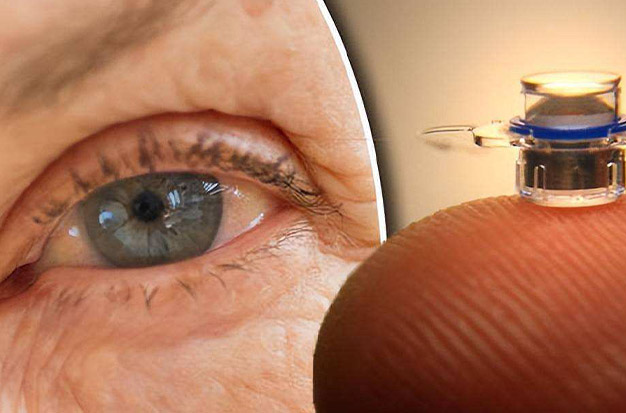
Headaches can be brought on by certain eye conditions. It’s normal to wonder if your pain could be caused by glaucoma if you have it or are worried that you might. The presence of a headache behind the eyes can also be a symptom of common headaches.
So, does glaucoma lead to headaches? If so, which types of glaucoma cause headache pain?
Open-angle glaucoma, the most prevalent type, advances “quietly” and without any obvious symptoms, such as headaches or eye pain.
However, some forms of the disease that develop suddenly can result in headaches ranging from mild and throbbing to severe and incapacitating. These can happen suddenly, even in eyes that are otherwise healthy, even though they are less common than open-angle glaucoma.
Let’s find out more about glaucoma headaches and the different types of glaucoma that can lead to them.
What Is Glaucoma?
Iridocorneal angle closure is the cause of angle-closure glaucoma, also known as acute angle-closure glaucoma. It occurs in eyes that exhibit hypermetropia, a narrow angle, a convex iris, and a shallow anterior chamber.
It can be brought on in eyes with a predisposition by spending time in dimly lit areas, using eyedrops to enlarge the pupil, or taking medications that alter the pupil’s size.
There are typically three types:
1. Asymptomatic narrow angle glaucoma
Angle-closure can occur under triggering circumstances.
It most frequently affects women, long-sighted people, and gets worse with age.
2. Primary acute angle closure glaucoma
Red eyes, eye pain, headaches, and reduced vision are some of the symptoms that appear suddenly.
3. Primary sub-acute angle closure glaucoma
A temporary reversible angle closure develops, but it quickly dissipates. The clinical picture resembles acute angle closure, but it is less severe and lasts less time.
Can Glaucoma Cause Headaches?
As a result of the drainage system abruptly closing and the resulting increase in eye pressure, acute types of glaucoma can primarily cause headaches. We are all aware that sustained high pressure can impair vision.
Headaches brought on by glaucoma may be felt in or near the eyes or forehead. People who have headaches frequently experience a range of intensities, from mild to severe. The headache might also be accompanied by nausea and vomiting at the same time.
Can Headaches Be Caused By Angle-closure Glaucoma?
Another type of condition that results in exorbitantly high eye pressure and headaches is called angle-closure glaucoma. When an angle-closure glaucoma attack occurs, the IOP gradually rises until the angle for drainage is completely closed. The pressure in the eye increases as a result of this more quickly. Your patients could experience headaches, nausea, and pain.
Angle-closure glaucoma treatment options include using laser iridotomy and medications to treat the lower eye. The same procedure can be applied to stop an episode of angle-closure glaucoma. In the acute situation, however, the patient might be in discomfort due to a swollen cornea brought on by high eye pressure, which makes the procedure much more difficult to complete.
The patient with narrow angles may occasionally experience closure of the angle, such as in dimly lit environments, prior to an attack of angle-closure glaucoma. Your patient may experience headaches and blurred vision in these circumstances. However, if the episode doesn’t turn into a full attack and the angle closure goes away, the headaches and blurred vision will usually go away as well.
There are other circumstances in which a person who is at risk for an angle-closure attack might experience sporadic closure of the angle or even a full closure attack. The prescription medications your patient takes, specific over-the-counter medications, or even having their eyes dilated during an eye exam could all be contributing factors.
Do Headaches Result From Primary Open Angle Glaucoma?
Most people associate the condition with primary open-angle glaucoma, or POAG. This type affects nine out of ten people with glaucoma.
No headache, not even a minor one, will be brought on by POAG.
Typically, this disorder doesn’t show any symptoms until partial vision loss has already taken place. The best way to avoid irreversible harm is to diagnose glaucoma early with eye pressure tests and then start receiving treatment as directed by a doctor.
Glaucoma eye drops, oral drugs, or glaucoma surgery can all stop or significantly slow the progression of POAG.

Does Narrow-Angle Cause Headaches?
These disease forms manifest rapidly, necessitating prompt treatment to prevent vision loss. Glaucoma headaches in these situations are typical and frequently occur without prior illness or warning.
Narrow-angle glaucoma is one of these emergencies as it causes eye pressure to rapidly increase. It goes by a few different names, including angle-closure glaucoma or acute glaucoma.
Narrow-angle glaucoma cancause severe headaches, which may or may not be accompanied by pain in the forehead or eyes. Eye redness, vision changes, the perception of colored “halos” around lights, sensitivity to light, nausea, and vomiting are other symptoms that can result from the condition.
Does Neovascular Glaucoma Cause Headaches?
Neovascular glaucoma is one type of glaucoma that can result in very high eye pressures and headaches. This is a secondary form of glaucoma in which abnormal blood vessels develop over the drainage system. When a person has proliferative diabetic retinopathy, a more severe form of diabetic eye disease, the growth of these abnormal iris and drainage-angle vessels can occur. A central retinal vein occlusion is one example of a vascular obstruction in the eye that can lead to them.
Other, less frequent causes of neovascular glaucoma exist, but they all involve the development of these abnormal blood vessels. The drainage angle eventually becomes completely covered, and the eye pressure rapidly increases. A headache, blurred vision, pain, and nausea are among the symptoms the patient will experience. Regular dilated eye exams, especially if you have diabetes, are the best way to prevent these types of glaucoma.
Does Secondary Glaucoma Cause Headaches?
Neovascular glaucoma is a form of secondary glaucoma in which abnormal blood vessels develop in the drainage angle of the eye, which is in charge of the regular drainage of fluid from the interior of the eye. As in narrow-angle glaucoma, when this drainage pathway is blocked, eye pressure may rise quickly and result in headaches.
The most prevalent underlying cause of neovascular glaucoma is severe diabetic ocular disease, which also results in diabetic retinopathy.
Summary
Consult your primary care physician about these symptoms if you frequently experience headaches. These headaches might not necessarily be caused by your eyes. Making a note of when the headaches happen, what might be causing them, and what relieves them is one helpful suggestion. Even though glaucoma is a rare cause of headaches, it is still important to get an eye exam if you are experiencing this symptom and think it might be related to your eyes.
Read more about: Can Dry Eyes Cause Headaches? Can Cataracts Cause Headaches?



